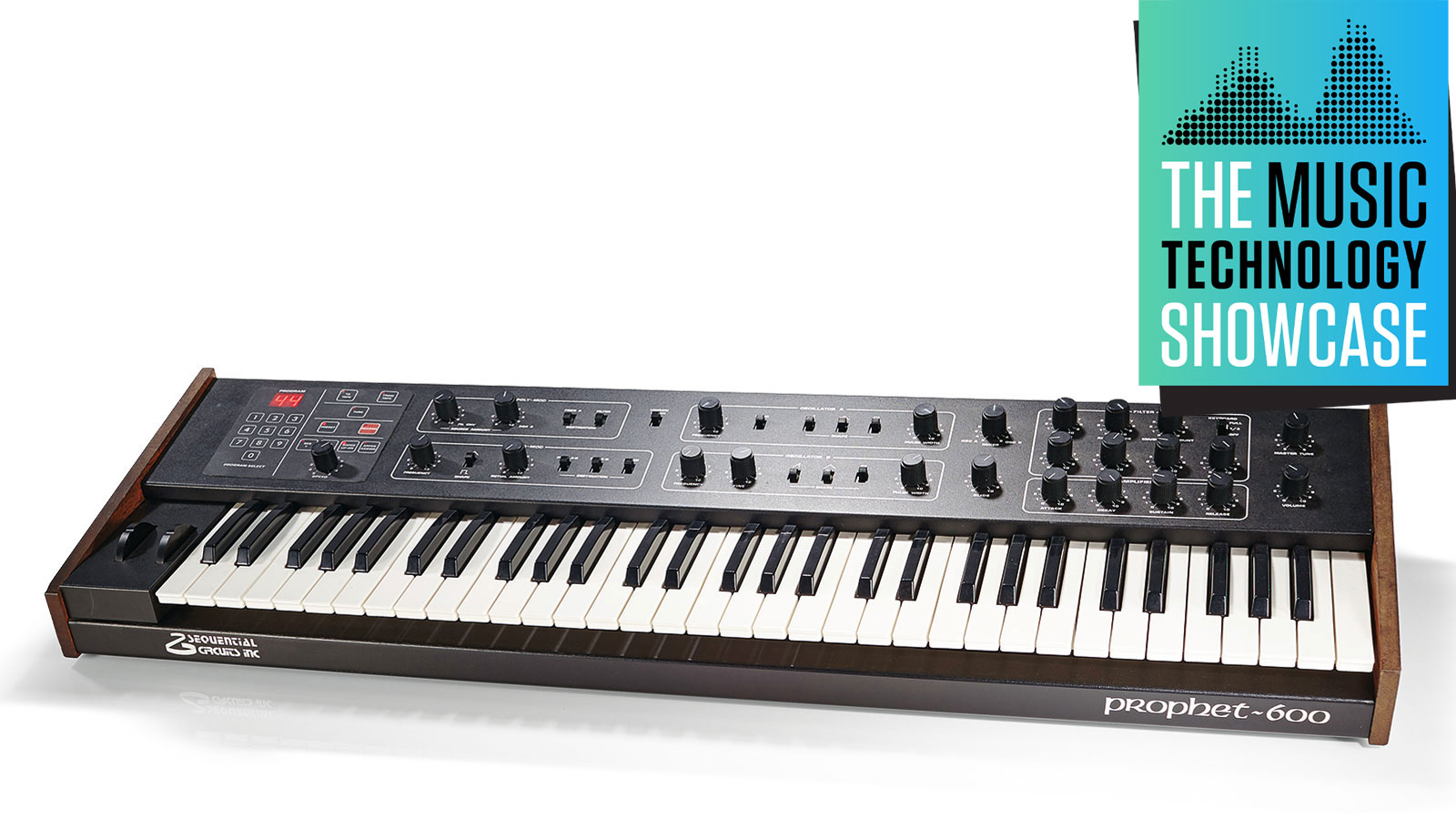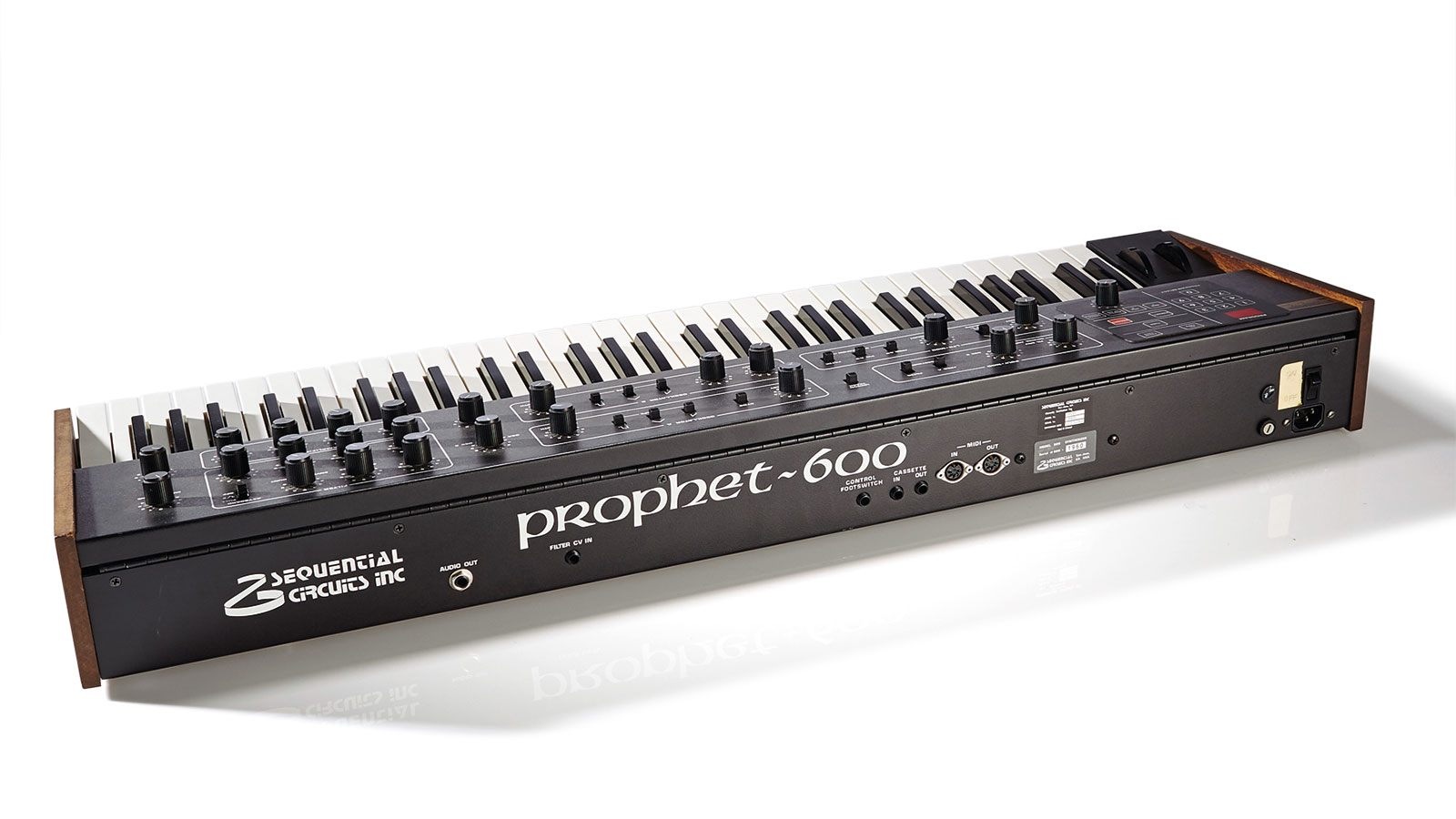Vintage music tech icons: Sequential Circuits Prophet-600
The P600 was the first to feature a MIDI interface, let's reassess an iconic synth

Music Tech Showcase 2021: Although the inflation-beating rise in prices for old gear may be anathema to some, the analogue revival does at least allow for certain synths to be reassessed. This is never more true than when an upgrade comes along to address the shortcomings in the original.
The Prophet-600 is one such synth. It was always overshadowed by the Prophet-5, which has gone on to become an undisputed classic, though the P600 claimed its own place in synthesizer history by being the first to feature a MIDI interface straight out of the box. This is of course understandable as Dave Smith played a significant role in the design of both.
While the polyphonic Prophet-5 was most revolutionary in terms of patch storage (it was the first to be able to save and recall all programmable parameters), the underlying technology was eventually utilised to bring down the price of later Sequential synths, including the Prophet-600.
However, let’s not forget that when the P600 was released in 1982 Yamaha were about to unleash the DX7, which ultimately went further down the road to a ‘digital future’ than anyone had imagined.
Six of the best
The Prophet-600 is a six-voice analogue synthesizer. Each voice has two oscillators that are capable of generating Saw, Pulse and Triangle waveforms.
Pulse Width and frequency are adjustable for each, with Oscillator B adding a fine-tuning control (perfect for that fat detuned analogue vibe). There is also a switch for oscillator sync – Prophet ‘sync sweeps’ had by now become a recognisable commodity.
We have a very basic sequencer, simple arpeggiator and patch storage buttons – all using the (very ’80s) membrane-style keypad
Next you have a 24dB/octave low-pass filter section, which is capable of self-oscillation. In fact, the P600 has a reputation for possessing an aggressive filter.
Get the MusicRadar Newsletter
Want all the hottest music and gear news, reviews, deals, features and more, direct to your inbox? Sign up here.
However, this isn’t to say it’s not capable of more subtle sonic shaping. A four-stage ADSR envelope is hard-wired to filter cutoff via a dedicated filter envelope depth control. Another ADSR is configured solely for amp envelope duties.
An LFO, with two basic wave shapes, can be routed to modulate frequency and/or pulse width of oscillators A and B (simultaneously only), as well as filter cutoff.
However, the much-lauded ‘Poly-Mod’ section familiar to P5 owners is also thankfully present. Here the output of the filter envelope or second oscillator can be directed to control the pitch of Oscillator A or filter cutoff. This makes pitch-swept, or less polite cross-modulated effects, possible.
Finally, we have a very basic sequencer, simple arpeggiator and patch storage buttons – all using the (very ’80s) membrane-style keypad. A two-digit alphanumeric display shows the current Program.

False Prophet
While the Prophet-600 appeared to be a cheaper version of the Prophet-5 (with the same VCO chips and similar architecture), it had one flaw that proved to be its sonic Achilles heel. The Prophet-600 made even greater use of the former’s Z80 CPU, being used to generate the envelopes.
However, the CPU was underpowered for the task at hand, and the P600 was lacking in responsiveness and punch at times. Although its fastest attack time is pretty fast, it suffered from poor keyboard (scanning) latency, slow VCA refresh rates and low (4-bit) control resolution.
So why would you buy a Prophet- 600? Well it does have a certain distinctive sound to its filter and, despite the deficiencies mentioned above, it is a real analogue synth with a certain degree of warmth and depth. The real answer though arrived two years ago with a project from GliGli, an Xbox hacker turned synth aficionado.
Using the very affordable ($27) ‘Teensy++ USB Development Board’ to replace the original Z80 CPU, he set about rewriting the control system from scratch. So with a little work it is now possible to upgrade the Prophet-600 into a much improved synth.
For drones, pads, sweeps, basses, weird cross-mod tones and even drums, the Prophet- 600 is a winner
The GliGli mod not only addresses the problems of the original, it also adds new features, including extra LFO wave shapes, an added vibrato source, unison detune (for a monstrously fat 12 oscillators per note), VCA overdrive and completely overhauled MIDI spec.
Even better, the firmware is updatable via MIDI, so features are still being added. At today’s prices the new mod turns the Prophet-600 into one of the most affordable ways of getting a real vintage VCO-based polysynth.
Whether you get your hands on an original un-modded Prophet-600 or the updated GliGli version, you’ll find that it is capable of a wide range of tones. To be frank, while it does get very close at times, it is certainly not the same as a Prophet-5 (which commands a very high price these days).
However, the P600 filter allows it to go into some sonic territory of which the P5 is not necessarily capable – think ’80s slasher movie for starters. This said, for drones, pads, sweeps, basses, weird cross-mod tones and even drums, the Prophet- 600 is a winner. What’s more, it is easy to get your head around, though the GliGli version does necessitate some additional menu-diving.
It would be hard to label the Prophet-600 as an outright classic, though it has a lot going for it and is fun to use.
Verdict
An extremely capable analogue synth which with the GliGli mod undergoes a sonic rebirth.
Original RRP £1,650 | Used from £950
Buying a used Sequential Circuits Prophet-600
There are some things to consider when looking to buy a P600
1. Always take your potential purchase for a test-drive before parting with cash. The most noticeable issue is likely to be dodgy pots, leading to jumping settings and possible audible glitching. However, pots are fairly cheap to replace.
2. Of more concern are problems with the CEM synth chips. ICs like this are increasingly rare and not especially cheap. Play one note and slowly add five more. You should hear six notes in total. If you don’t, then ask a few questions. If the keyboard fails to trigger sounds on some notes then this is likely to be a more simple cleaning issue.
3. If you can get a modded GliGli version, then the chances are that the synth has had a bit of attention paid to it in recent years suggesting a potentially more reliable purchase.
Future Music is the number one magazine for today's producers. Packed with technique and technology we'll help you make great new music. All-access artist interviews, in-depth gear reviews, essential production tutorials and much more. Every marvellous monthly edition features reliable reviews of the latest and greatest hardware and software technology and techniques, unparalleled advice, in-depth interviews, sensational free samples and so much more to improve the experience and outcome of your music-making.
“Excels at unique modulated timbres, atonal drones and microtonal sequences that reinvent themselves each time you dare to touch the synth”: Soma Laboratories Lyra-4 review
e-instruments’ Slower is the laidback software instrument that could put your music on the fast track to success










